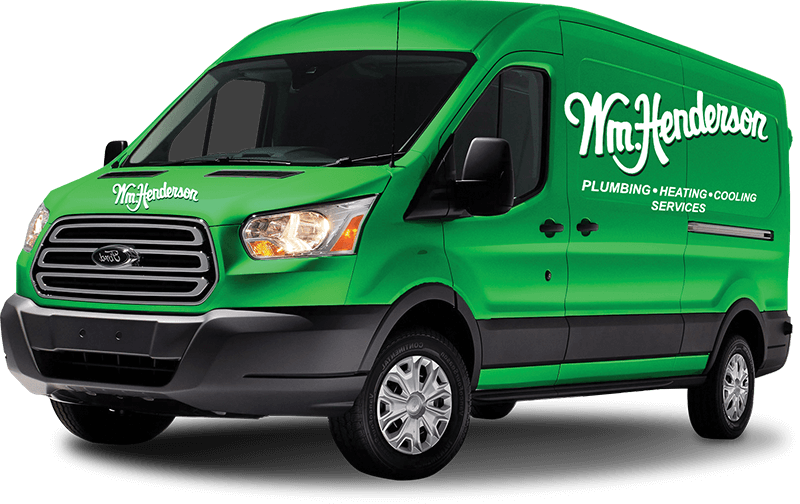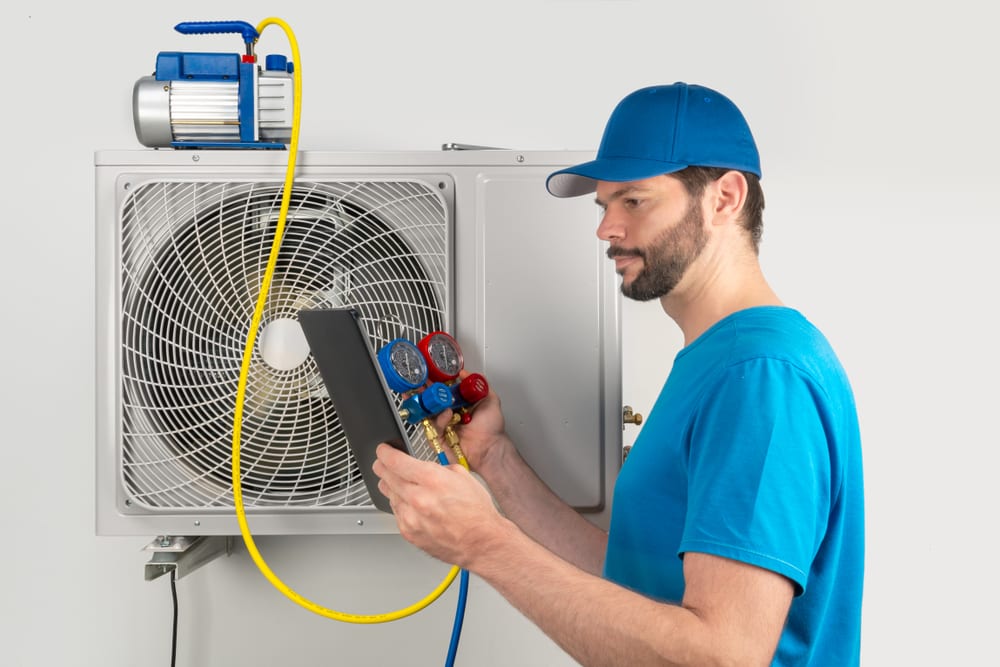
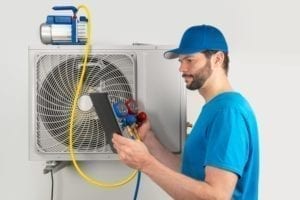 A heat pump is a critical component of your home and provides an energy-efficient solution to keeping your space comfortable during the winter and summer seasons. Functioning as both a heating and cooling method, a heat pump transfers heat from the air and moves it through an air handler to another location. In the winter season, the cycle reverses itself to pump heat from the outdoors into your home.
A heat pump is a critical component of your home and provides an energy-efficient solution to keeping your space comfortable during the winter and summer seasons. Functioning as both a heating and cooling method, a heat pump transfers heat from the air and moves it through an air handler to another location. In the winter season, the cycle reverses itself to pump heat from the outdoors into your home.
To maintain a livable temperature in your home, it’s important to purchase the right size heat pump. But shopping for a heat pump can be an overwhelming process. Determining the right sized heat pump for your home can seem like a daunting task. Fortunately, we have a few tips to help you get started.
Factors to Consider When Sizing a Heat Pump
The first step to sizing a heat pump is to conduct a load calculation. You do this by calculating in cubic meters the total volume of spaces being heated. Based on space, size, insulation, and many other variables of the home, you can determine the number of BTUs you’ll need. To properly evaluate the number of BTUs needed, we recommend speaking with an HVAC professional.
If your old heat pump system was sized correctly, an HVAC professional can easily replace your heat pump with a similar model. However, any changes to the home may require a different size heat pump. To determine the proper heat pump size, we recommend using the Manual J Load Calculation method.
Need Help? We Offer Air Conditioning Repair in Havertown, PA & Other Areas
 Manual J Inspection
Manual J Inspection
Prior to determining what size heat pump you need, you must first hire an HVAC technician to perform a Manual J inspection. Manual J is a protocol, devised by the ACCA (Air Conditioning Contractors of America Association), that acquires instructions for assessing your home’s structural and thermal characteristics. Variables such as insulation levels, the size of your home, and air duct tightness are evaluated to determine how much heating and cooling you need.
Once an HVAC professional has completed a Manual J Inspection, you are then ready to choose the heat pump size that’s right for your home.
Type of Climate
Although heat pumps are available in an array of sizes, this type of heating and cooling system is not designed to operate efficiently in cold areas of the country. Since heat pumps use relatively less energy to move heat from one place to another, these devices operate best in moderate climates. That’s why you must do your research to ensure you get the right heat pump or heating system for your home. If you live in an extremely cold climate, typically below 10 degrees fahrenheit to 25 degrees fahrenheit, you may need to get an auxiliary heating system.
Auxiliary heat utilizes electric resistance heating to convert nearly 100% of energy in the electricity to heat. Because of this, electric resistance heating is less efficient than your heat pump and should only be used when needed.
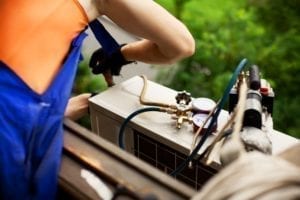 SEER Ratings
SEER Ratings
When you are sizing a heat pump system for your household, make sure to invest in a device with a good SEER rating. The acronym SEER stands for Seasonal Energy Efficiency Ratio. A SEER rating is a ratio that measures the cooling efficiency for air-source and ductless-split systems. This then is divided by the energy it uses into Watt-Hours.
For Northeast, Midwest, and Pacific Northwest, 13 SEER is the federal minimum standard for new units. For the remainder of the country, the minimum standard is 14. The higher the SEER rating, the more efficiently your heat pump system can produce warm and cold air. For heat pumps, you should consider a model with a 15 SEER rating or higher. On the other hand, energy-star rated heat pumps feature SEER ratings that vary from 18 to 27.5.
For warmer climates, we recommend getting a device with a higher SEER; for colder climates, look for a higher HSPF rating. HSPF measures the efficiency of air-source heat pumps. With higher SEER ratings comes a higher system cost. However, energy-star rated systems can save you money on your utility bill in the long run.
Need Assistance? Our Licensed Technicians & Local Plumbers in Wayne, PA Will Help You Find a New Heat Pump
Why It’s Important to Choose a Proper Heat Pump Size
When it comes to a heat pump, size matters. A heat pump too big or small has consequences. An improper heat pump can result in poor air distribution, higher utility bills, reduced lifespan, insufficient dehumidification, constant repairs—this list goes on. Take a look of some telltale signs that your heat pump may be the improper size.
Oversized Heat Pumps
If you have a heat pump that’s too big for your home, you may experience the following symptoms:
-Short cycling (when unit turns on and off frequently)
-Hot spots throughout the home
-High humidity
-Higher energy bills
Undersized Heat Pumps
If you have a heat pump that’s too small for your home, you may experience the following symptoms:
-Short cycling (when unit turns on and off frequently)
-Higher energy bills
-Poor air distribution
-Strange noises or smells
If you notice any of the following symptoms, contact an HVAC technician to confirm what size heat pump you need to eliminate humidity and hot spots in your home/.
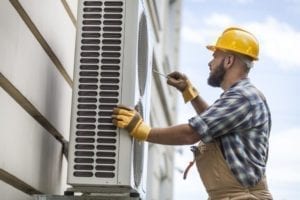 Heating & Air Conditioning Services
Heating & Air Conditioning Services
When you’re in need of expert HVAC services, contact our team at Wm. Henderson. In addition to heat pump repair, installation, and maintenance services, we also provide a wide array of heating, cooling, and plumbing services. We offer HVAC and plumbing services for ductless mini-split systems, central air conditioners, boilers, and furnaces. Give our team a call by phone at (484) 206-8594 or book an appointment online to receive trustworthy heating and air conditioning repair near you in Pennsylvania. We offer HVAC services in areas of Pennsylvania such as Broomall, Coatesville, Conshohocken, and West Chester.

